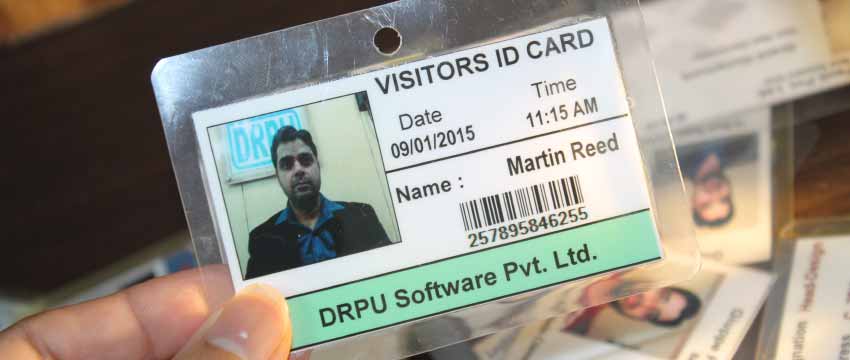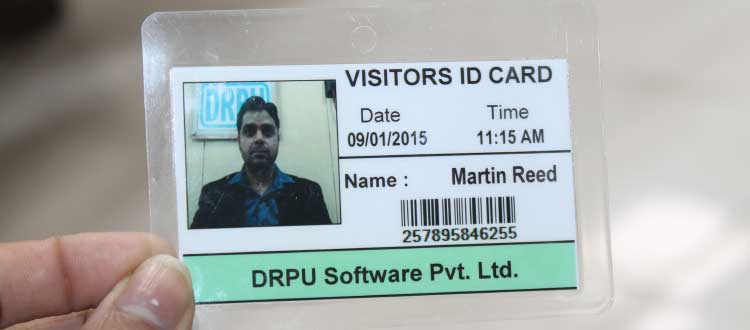Visitor ID Card: Managing, Issuing Process, and Usage
Visitor ID cards are commonly issued and managed by organizations to track and monitor individuals who are not regular employees or members of the organization. These ID cards serve multiple purposes, such as ensuring security, managing access control, and providing a record of visitor activities. The exact process of issuing and managing visitor ID cards may vary depending on the organization's policies and the level of security required.
Last Updated On:
Points to be Remember:
-
Pre-registration:
In many cases, visitors are required to pre-register their visit before arriving at the organization. This can be done through various methods such as online forms, phone calls, or email. During pre-registration, visitors provide their personal details such as full name, contact information, purpose of visit, and any additional information required by the organization.
-
Check-in process:
When a visitor arrives at the organization, they typically go through a check-in process. This can involve presenting identification documents such as a driver's license or passport, which are verified by the security personnel or receptionist. The visitor's information is then entered into the organization's visitor management system.
-
Issuing the ID card:
Once the visitor's information is recorded, an ID card is usually issued. This ID card serves as a temporary identification for the duration of the visit. The ID card may include the visitor's name, photo, the organization's logo, a unique identification number, and any additional relevant information. Some organizations may use a simple paper-based badge, while others might provide a plastic card with a barcode or RFID technology.
-
Access control:
Visitor ID cards often come with access control features to restrict the areas that visitors can access within the organization. The ID card may be programmed to allow access to certain designated areas or restricted to specific timeframes. This helps ensure that visitors only enter authorized areas and enhances overall security.
-
Monitoring and tracking:
Throughout the visitor's stay, their activities may be monitored and tracked. This can be done through various means, including security cameras, sign-in/sign-out sheets, or electronic systems that record entry and exit times. These records help keep track of visitor movements and can be used for security and compliance purposes if needed.
-
Return and expiration:
When the visit is over, visitors are typically required to return their ID cards to the designated location or personnel. In some cases, visitors may be allowed to keep the ID card for future visits if they are expected to return regularly. For one-time visitors, the ID card is usually collected and deactivated to ensure it cannot be used again.
-
Data management:
The visitor information collected during the check-in process is usually stored securely in a visitor management system. This data may include the visitor's personal details, purpose of visit, check-in/check-out times, and any relevant notes or observations. Organizations must handle this data in compliance with privacy regulations and internal policies.
Can visitor ID cards be reused or are they meant for one-time use only
Visitor ID cards can be designed for either one-time use or multiple uses, depending on the specific requirements and policies of the organization or facility issuing them. Let's explore both scenarios in detail:
➲ One-Time Use Visitor ID Cards:
One-time use visitor ID cards are typically issued for temporary visits or events where access control and identification are necessary but not required beyond the initial visit. These cards are typically designed to be used once and then discarded.

Characteristics of one-time use visitor ID cards:
✔ Non-reusable: These cards are not intended for reuse or prolonged use.
✔ Expiry: They often have a predetermined expiration date or time, usually matching the duration of the visitor's stay or event.
✔ Void after use: Once the visitor leaves or the event concludes, the card becomes void and cannot be reused or reactivated.
✔ Low-cost materials: They are often made of inexpensive materials like paper or low-quality plastic.
✔ Limited security features: Since they are not intended for long-term use, they may have basic security features like a barcode or QR code for quick verification.
➲ Multi-Use Visitor ID Cards:
Multi-use visitor ID cards are designed for situations where visitors may have repeated access to a facility over an extended period. These cards are issued to individuals who require ongoing access, such as contractors, employees of partner organizations, or frequent visitors.
Characteristics of multi-use visitor ID cards:
✔ Reusable: These cards are designed to be reused multiple times until their validity or access privileges expire.
✔ Long-term validity: They often have a longer validity period, which can range from weeks to months or even years, depending on the organization's policies.
✔ Enhanced security features: Multi-use cards typically have more advanced security features to ensure the ongoing authentication of the cardholder, such as magnetic stripes, embedded chips, or proximity technology (RFID or NFC).
✔ Personalization: These cards may include the visitor's photo, name, and other relevant identification information for better visual verification.
✔ Return or deposit system: In some cases, organizations may implement a card return or deposit system to ensure visitors return the cards after their use or pay a deposit that is refunded upon return, encouraging responsible card handling.
Important Note:- It's important to note that the specific policies and practices regarding visitor ID cards may vary among different organizations or facilities. Therefore, it's always recommended to check with the issuing authority to understand the guidelines and instructions regarding the use and return of visitor ID cards in a particular context.
